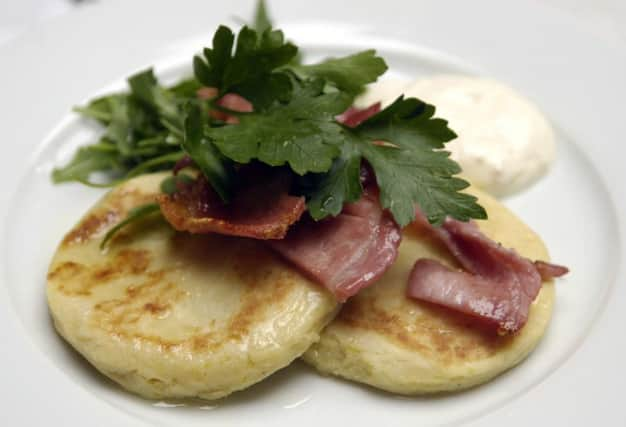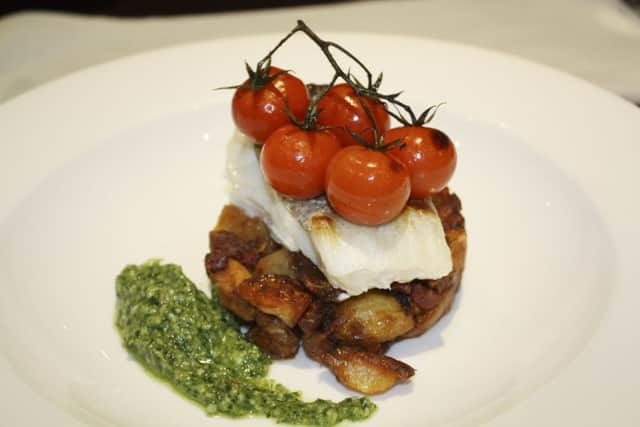Salting white fish to preserve it is a tradition that transcends Continents


This excerpt from the ‘Cookin Woman’ book, published in 1949, by Florence Irwin describes the dying art of salting and drying fish. Thankfully it’s not fully extinct yet but rare all the same. Ling is a fish, similar to cod, and quite common around our waters. Traditionally it was salted and dried to preserve for the winter months. Nowadays if you tried drying salted fish on a hedge you’d have every environmental health officer in the country at your door. Same goes for dulse – I remember seeing it being dried on a corrugated tin roof outside Ballycastle many years ago.
There’s a fish van that comes to Ballymoney every Friday and I was pleased as punch to see salt ling for sale on the board. It was £10 for a kilo, not quite 4d a pound, but good value all the same as far as fish prices go. Salting white fish to preserve it is a tradition that transcends continents – it appears in the cuisines of Peru right through Europe and on to the Eurasian country of Georgia.
Advertisement
Hide AdAdvertisement
Hide AdIn Ireland it was also dried in chimneys which gave it a smoky flavour and yellow colour. The fish was then soaked in cold water overnight and simmered in milk with onions and served with potatoes – a precursor to the now ubiquitous chowder.


I make a point of stopping at fish vans whenever I see them dotted around the country – the fish is always good quality and they’re a lot cheaper than supermarkets. When they’re keeping a centuries old preservation tradition going too they deserve our support.
An ex student of mine, Maureen Mitchell, dropped me in an old cookery book last week. Simply called “Potato Recipes” it was published in 1934 and cost the princely sum of 3d. On page seven it suggests that the allowance of potatoes per head per week should be 3-4lbs for a woman and 4-7lbs for a man.
I know a lot of farmers who would be delirious if this was the case nowadays.
Advertisement
Hide AdAdvertisement
Hide AdIt’s a relatively innovative book given the time of publishing with recipes ranging from French potato delicacies like beignet souffles and cheese aigrettes, to Scotch hot pot and Irish stew and even a chocolate potato cake.


After a lot of driving last week, I longed for a simple baked potato or bowl of comforting mash.
My new year’s resolution not to eat from garages fell by the wayside in the second week of January. To make it right the ling is soaking in water right now and William Hunter’s Aghadowey queens are on standby to accompany it.
The first recipe this weekend is taken straight from the potato book, as it was written, hence the imperial measurements. If it doesn’t work out we’ll blame the author, the late Elizabeth Craig.
The second recipe is for ling (or use smoked fish or white fish) cooked in milk with bacon, leeks and potatoes – as comforting as it gets.